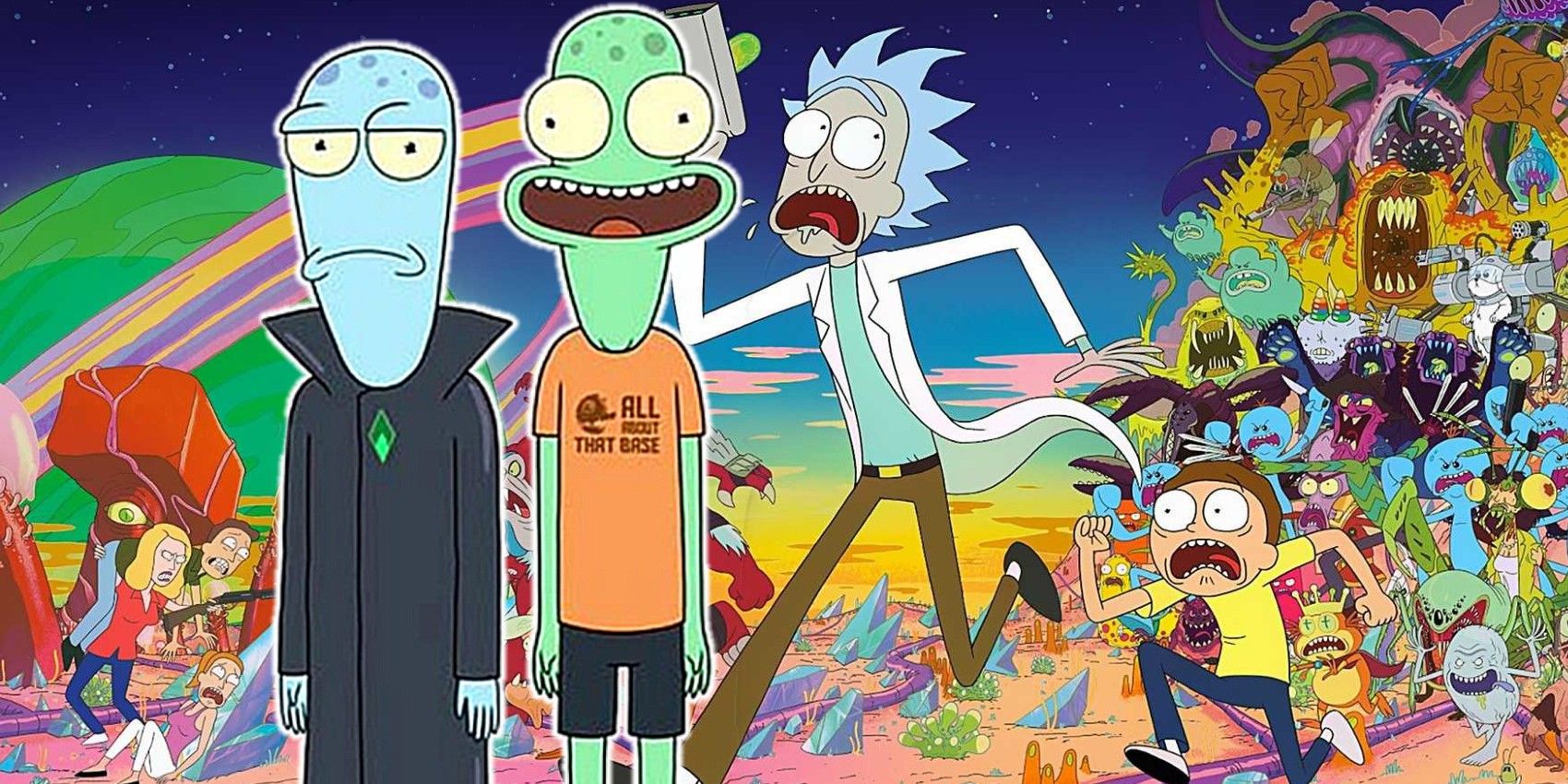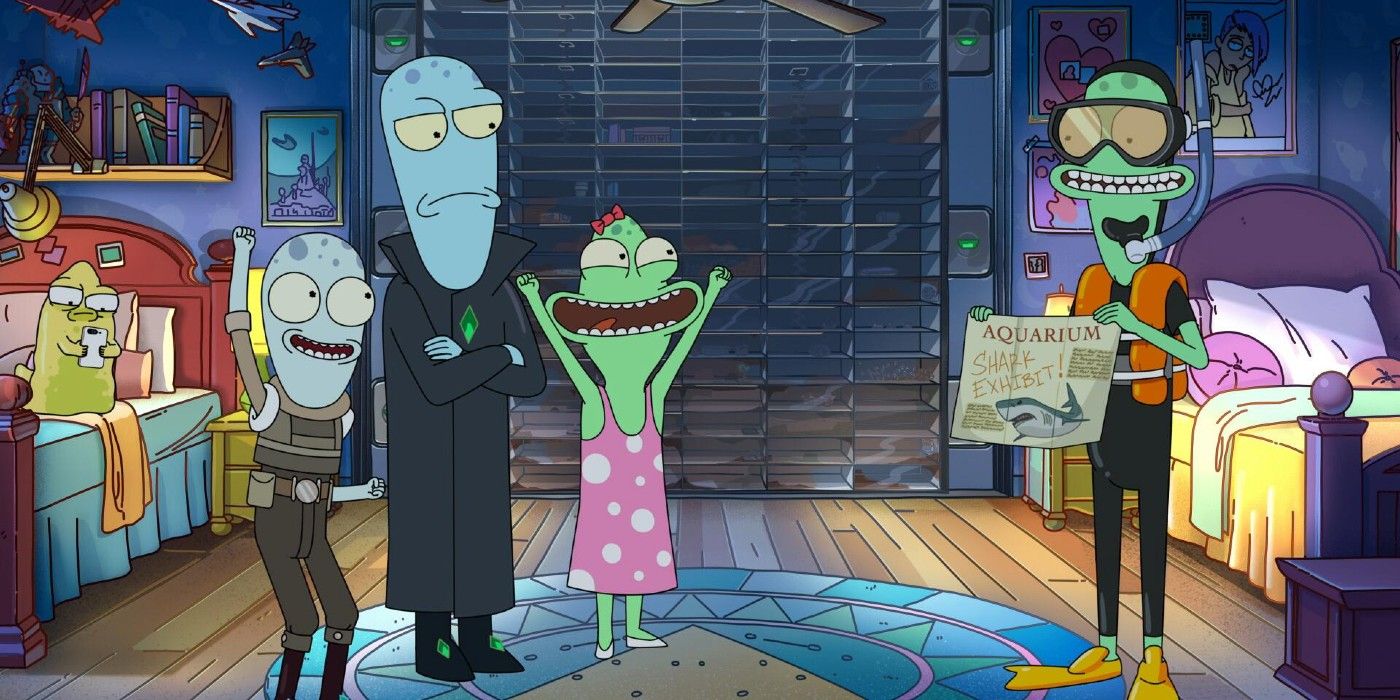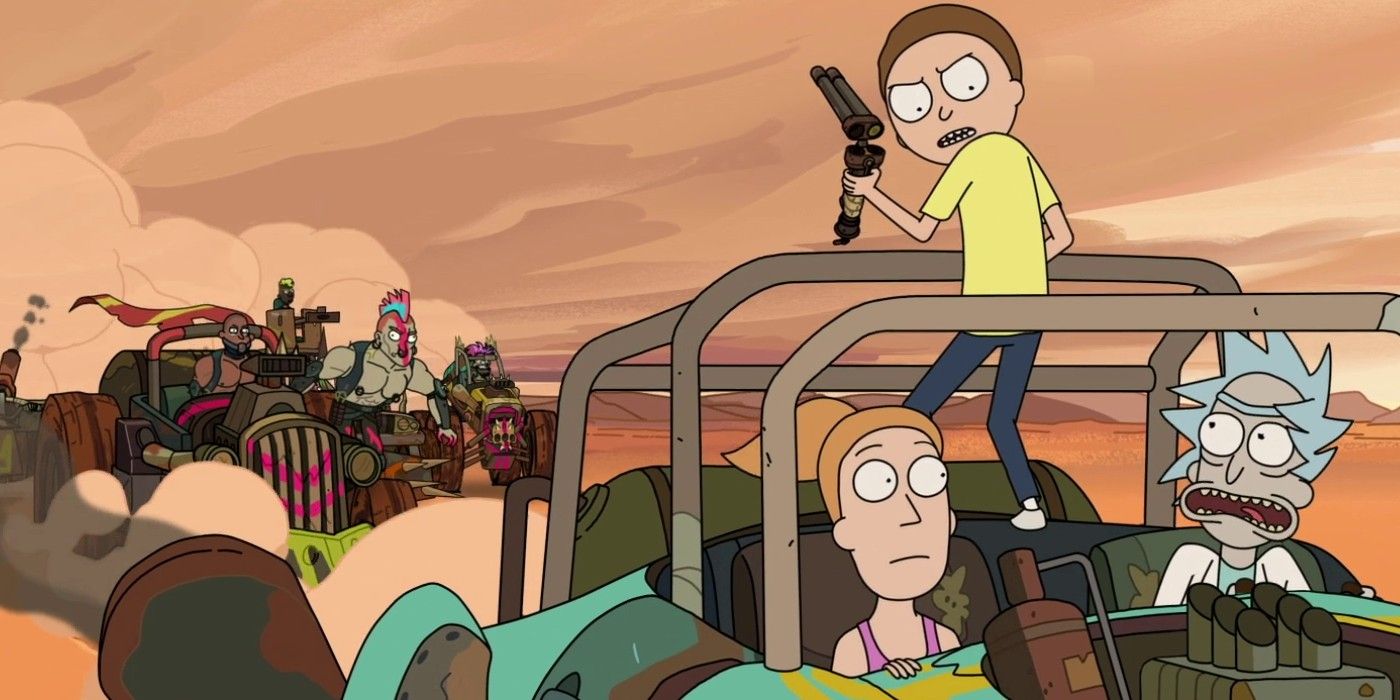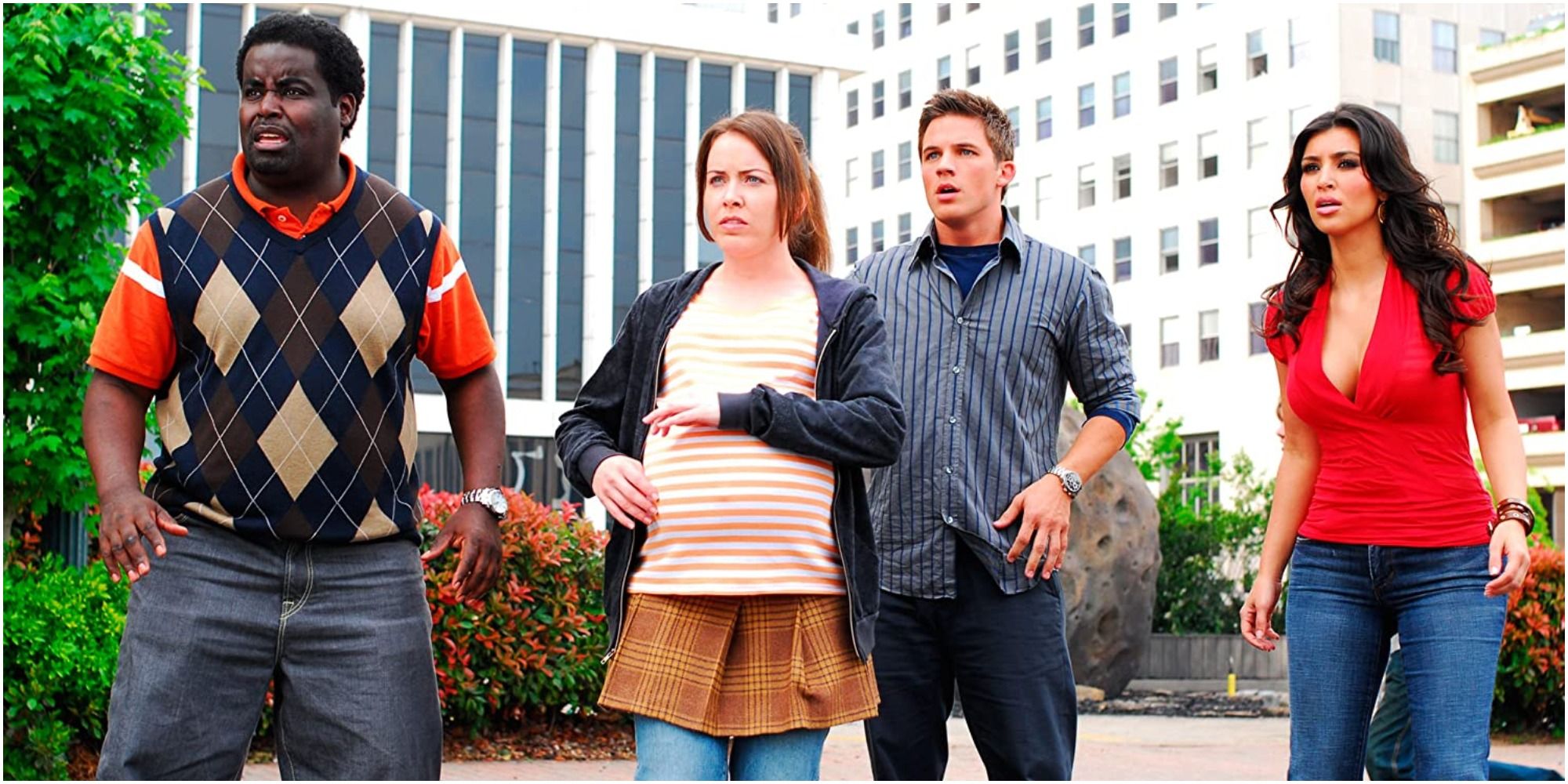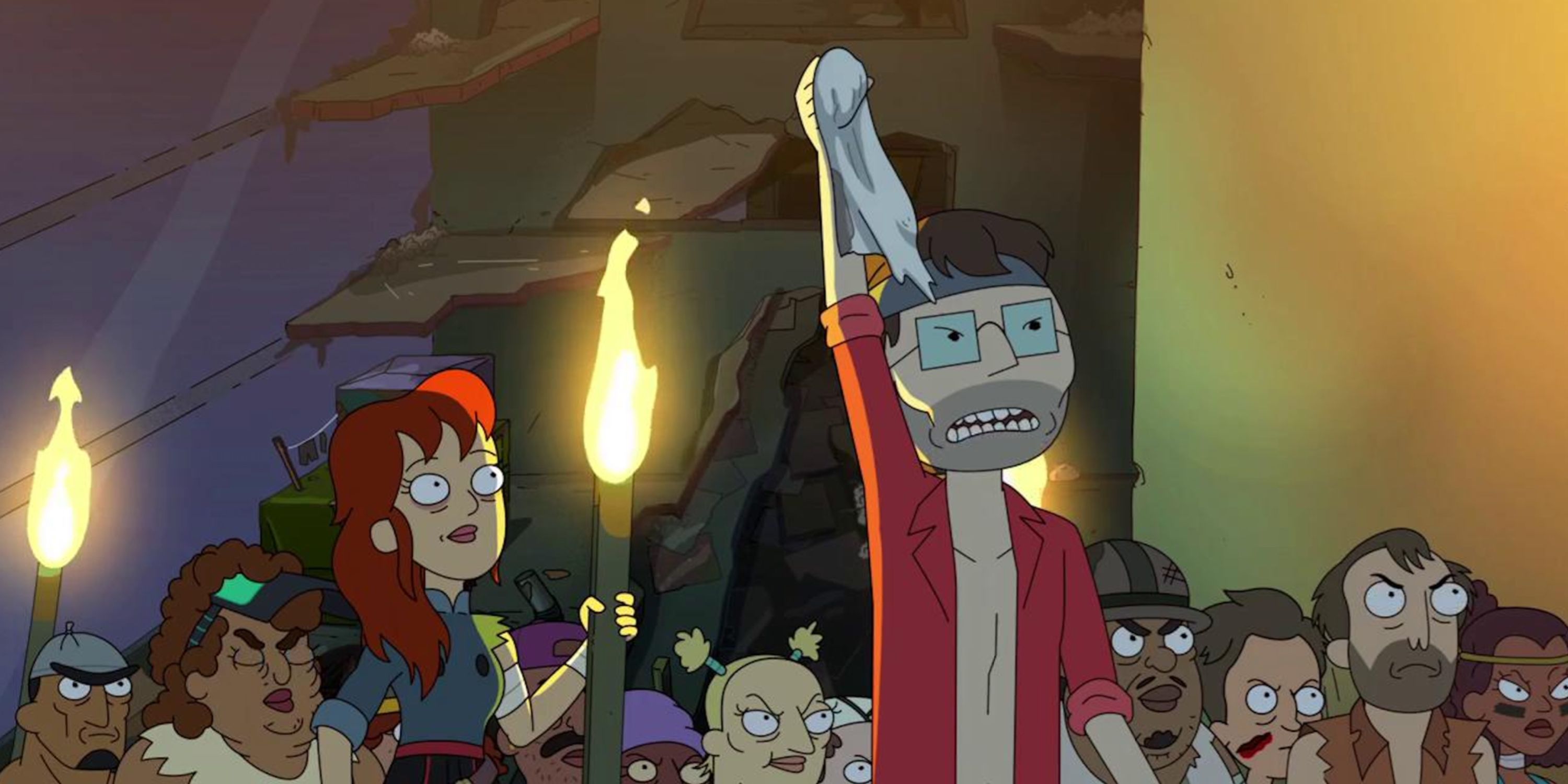The movie parodies featured in Rick & Morty are more consistently inventive and cleverer than those of the superficially similar Solar Opposites, and the reason has its roots in an interesting bit of cultural analysis. Beginning life as a raunchy spoof of Back to the Future, Rick & Morty has gone on to become a critically acclaimed animated satire that spoofs sci-fi and sitcom tropes alike with its tales of the dim-witted Morty and his amoral super-genius granddad Rick.
Co-created by Community’s Dan Harmon and Justin Roiland, Rick & Morty may be more R-rated than Harmon’s earlier series but it shares a subversive streak that has seen the series parody countless sub-genres over its 4 seasons. Rick & Morty has spoofed Game of Thrones, the Jurassic Park movies, vampire movies, superhero movies, and even the idea of storytelling itself in season 4's "The Never Ricking Morty", all of which emboldened Roiland’s second series Solar Opposites to do some movie parodies of its own.
However, the movie parodies featured in the first season of Solar Opposites don’t pack the same punch as the spoofs that Rick & Morty have pulled off, and the reason for this discrepancy runs deeper than the newer series needing time to find its feet. With a similar adventure-of-the-week format and a pair of main characters who reside on opposite ends of the “cynical to sweet” scale, Solar Opposites could reasonably be expected to touch on much the same territory as Rick & Morty. However, Rick & Morty’s movie parodies have consistently found their strength in subverting expectations, where Solar Opposites is often content to amuse viewers with a recognizable premise.
Parody Versus Pastiche
As cultural critic Fredric Jameson noted, contemporary parody often lapses into pure pastiche, where creators will imitate an idea from another work without actually making fun of the original work or challenging its ideals. Solar Opposites’ Green Room spoof is a perfect encapsulation of the phenomenon, with the series showing its two teenaged protagonists trying to prove whether humans are inherently good or bad and ending up stuck in the small supply room of a neo-Nazi bar, now needing to fight for their lives to get out. It’s a pretty blatant riff on Jeremy Saulnier’s grim 2015 thriller Green Room, a movie whose incredibly dark premise makes it naturally ripe for parody by a series as irreverent as Rick & Morty or Solar Opposites. But beyond the surface level reference, the show doesn’t do anything with the parody beyond mentioning the movie. The reference is present to remind viewers of Green Room, and then it simply segues into a scene of the kids using a mecha-suit to mow down Nazis (the gory carnage of which is fun, but not really a parody in any meaningful sense).
How Rick & Morty’s Parodies Work
Compare this to Rick & Morty’s Mad Max parody in season 3’s ‘Rickmancing the Stone’, which in one twenty-minute episode manages to spoof Road Warrior, Fury Road, and particularly Thunderdome as well as Waterworld and the general premise of “rebuilding civilization” sci-fi stories more broadly. Despite the breadth of this parody, the Rick & Morty episode manages to include a similarly hilarious mecha-suit massacre courtesy of an equally squeamish and mild-mannered teen, but the show goes on to parody the premise and characters for the Mad Max series specifically. Rather than a general spoof of the franchise or a more generic “remember this movie?” reference, Rick & Morty recreates the reality of the Mad Max franchise and pulls comedic value out of its limitations. By turning the series setting into boring suburbia, Rick & Morty effectively point out a problem with post-apocalyptic fiction in general, showing that although these movies may warn of impending doom, they also make it look pretty paradoxically cool, and the promise of “rebuilding civilization” seen at the end of each Mad Max movie would ideally lead to a world wherein Max himself would have no more intense, violent, and cinematic adventures.
The Problem With Parody
This issue is not unlike the difference between the critically reviled Seltzer Friedberg Disaster Movie/Epic Movie series, which simply referenced then-popular media in the hopes of making audiences laugh through sheer recognition, and the critically acclaimed parodies of Zucker, Abrahams, and Zucker, which started by filling the script with jokes and later threw in specific spoofs. It’s the reason The Simpsons was criticized for parodying Harry Potter without reading the source novels in the 'Treehouse of Horror" segment “Wiz Kids”, and given how often both Solar Opposites and Rick & Morty reference famous genre works, it’s fair to expect that the writers can offer more than a surface-level reference. Particularly with aliens as its lead characters, there’s no reason Solar Opposites can’t be as ambitious about its sci-fi parodies as Rick & Morty, as proven by the multi-episode subplot surrounding the Wall.
How Solar Opposites Can Do Rick & Morty-Style Parodies
As evidenced in the ambitious seventh episode of Solar Opposites, the series can use Rick & Morty’s approach to pull off more ambitious, layered parodies. The trick that both shows tend to succeed with is combining two or more references rather than simply recreating one, with the second reference deepening and building on the first parody as Rick & Morty's do. For example, in the Wall subplot, Solar Opposites starts by parodying the 1997 indie horror Cube’s compressed setting and surreal premise, but soon the series is also spoofing The Wire’s vast cast and moral ambiguity, adding another layer to the parody and making an entirely new idea (with “Cube meets The Wire” being a pretty strong premise even outside of parody).
Since its inception, Rick & Morty has excelled at this trick of combining unexpected parodies into one ambitious spoof. The second episode of the series, "Lawnmower Dog", began as a pretty broad and simple spoof of Inception, but as the breakneck story started to gradually unravel, the episode ended up revealing itself to actually be a parody of infamous dream demon Freddy Krueger. The next episode opened as a parody of Fantastic Voyage with Morty venturing into a human body after being shrunk to microscopic size, only to immediately shift gears into a Jurassic Park parody (albeit one set inside a human body). Solar Opposites has shown it can do this sort of ambitious parody, but the series still needs to stick to the winning formula established by Rick & Morty if the show’s many movie parodies are to progress past simple pastiche.

